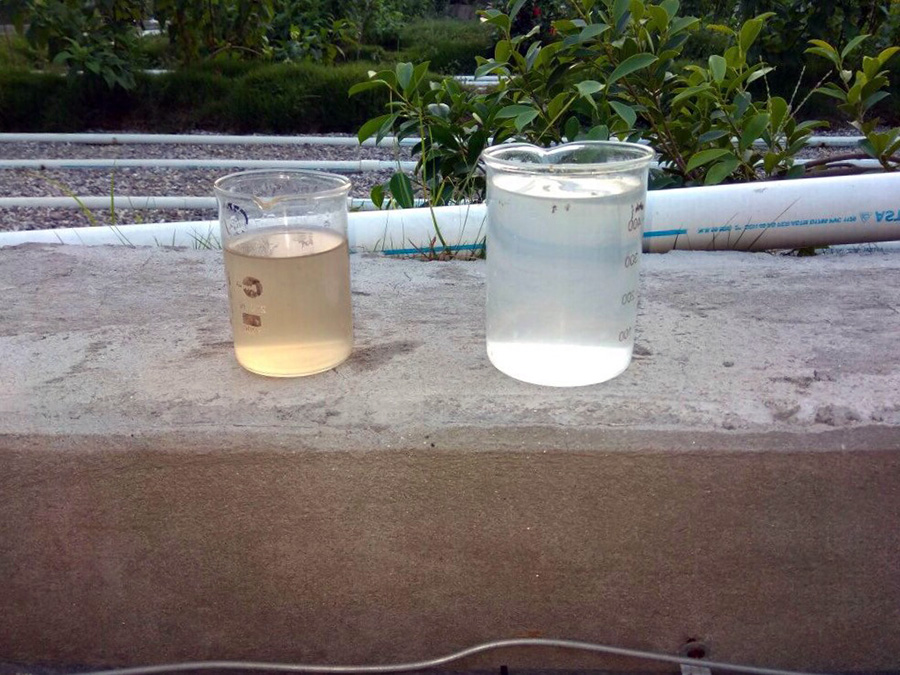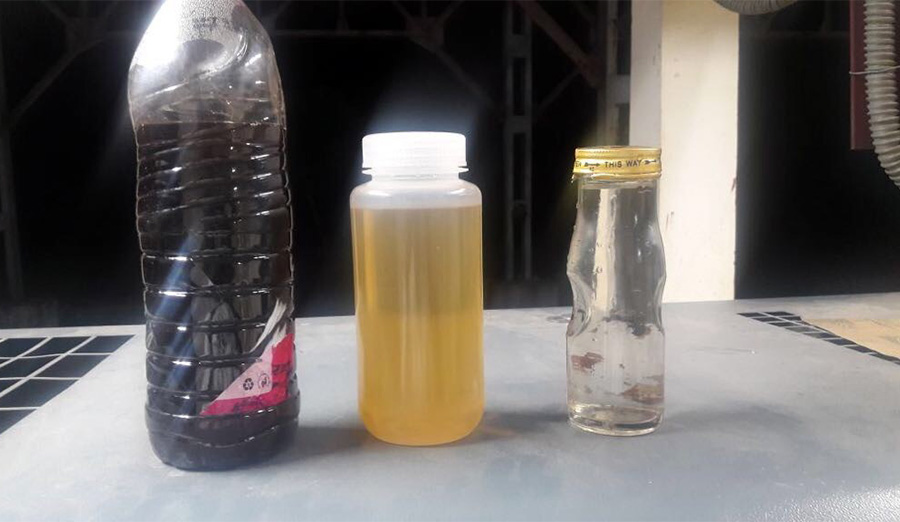
Industries where Ozone is used:
- Textile
- Paper
- Pesticide
- Bulk drug
- Plating
- Dairies and food products
- CEPT
Industrial effluent wastewater may carry a broad range of contaminants, including BOD, COD, colour, phenols, cyanides, sanitary waste and other complex chemicals. Ozone, in combination with other physical, chemical or biological processes, can treat complex industrial wastes due to its strong oxidative nature. Ozone oxidation breaks down organic molecules into smaller biodegradable components and in some cases to carbon dioxide.
In combination with other technologies, such as UV and peroxide, ozone is effective in destruction of difficult-to-treat organic compounds (organic removal). Industries that have benefited from ozone based advanced oxidation processes (AOP) include pharmaceutical, textile, chemical, automotive, foundry, landfill leachate, petroleum, etc.
Pretreatment with ozone and bio filtration has been successfully applied in textile processes, grey water treatment. Bio filtration can be enhanced by pretreating water with ozone. Ozone is produced on site using ozone generators. The ozone is then mixed with the water ahead of the bio filters. Provisions are usually made to minimise the amount of ozone that enters the bio filter since the ozone itself might damage the active bacteria. Pre ozonated effluents show a greater reduction of COD (up to 2.5 times) after biological treatment. Ozone oxidises hard to digest COD into easy to treat COD. Ozone breaks down long chains molecular compounds into smaller compounds thus improving treatment. It destroys most toxic compounds which hinder bio filtration. It destroys anaerobic bacteria which limit growth of aerobic bacteria. Residual ozone quickly reverts back to oxygen in waste water and does not harm aerobic bacteria.
Paper Industry
Effluent contains functional groups such as humic acids, tannins and lignin. Conventional treatments have limited efficacy due to high colouring matter. Ozone attacks these functional groups and reduces organic load in the effluent.
Dyeing Industry
Biological treatment can’t remove colour effectively. Reusability of water is essential due to huge water volumes. Ozone attacks the colouring matter by destroying double nitrogen-nitrogen bonds. About 1 mg ozone/ mg dye is required to achieve 95% colour removal, although this ratio varies by dye type. The ratio increases to about 1.5 for 100% removal.
Elimination of cyanides
Cyanides can be toxic even at levels as low as 25 ppb. Cyanides have a wide range of application in industries and cannot be replaced. Ozone acts rapidly with cyanides to form CO2 and NO3.
Elimination of heavy metals
Heavy metals can be present in free form or as complex compounds. Ozone oxidises these metals to form metallic oxides or hydroxides. These are then precipitated and removed easily.
Elimination of phenols
Phenols are discharged from coking plant, oil refineries, petrochemical plants, mines, paint stripping shops etc. At a pH between 8-11 ozone reacts rapidly with phenols to form oxalic acid and oxygen.
Gaseous effluents
Gases may include organic chemicals such as olefins, fatty acids, ketones, nitrites, esters, amines and sulphur-bearing compounds. Ozone is mixed with the polluted air by means of an injection nozzle. Few seconds are enough to effectively oxidise the gaseous pollutants.
Pre Ozonization
- Ozone quickly reverts back to oxygen in waste water thus not harmful to aerobic bacteria
- Ozonisation of raw effluents improves the bio oxidation of most effluents
- Non biodegradable effluents having high COD and low BOD benefit most from this process
- Pre ozonated effluents show a greater reduction of COD (upto 2.5 times) after biological treatment
- Ozone oxidised hard to digest COD into easy to treat COD
- Ozone break down long chains molecular compounds into smaller compounds thus improving treatment
- Destroys most toxic compounds which hinder in bio oxidation
- Destroys anaerobic bacteria (which limit growth of aerobic bacteria)


Maintenance of Sumps with Ozone
Sumps at industrial facilities can become easily fouled by biological growth resulting in the blockage of pumps and unpleasant odors. Ozone can be easily applied to sumps to prevent the growth of biological films and removal of these odors. Ozone eliminates the growth of micro organisms in the tank and destroys any odor producing compounds that might be present. Ozone works over a wide range of pH, so the adjustments in pH will not affect its biocide performance. Continuous use of ozone will gradually remove biofilms on the sump and associated equipment.

Recent Comments